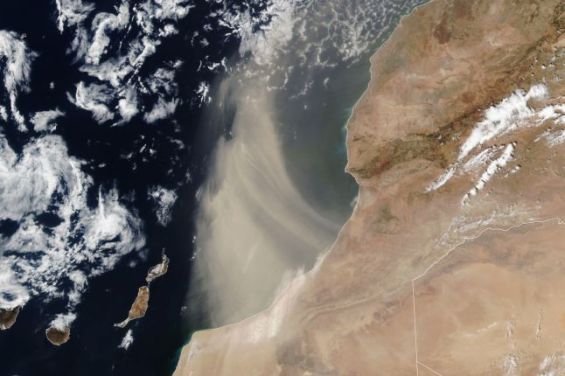A satellite image from the Visible Infrared Imaging Radiometer Suite (VIIRS) on the Suomi National Polar-orbiting Partnership, a weather satellite operated by the United States' National Oceanic and Atmospheric Administration (NOAA), captured winds carrying dust from Southern Morocco sweeping over the Atlantic Ocean.
The image, published by NASA’s Earth Observatory on August 24, shows dust from the Sahara Desert, described as «Earth’s largest source of airborne dust», with particles that «can travel for thousands of miles», according to the accompanying article.
From late spring to early fall, it is common for the dry, dusty Saharan Air Layer to carry particles westward across the Atlantic Ocean, high in the atmosphere.
«With different wind patterns in the winter and spring, dust emerging from North Africa can drift over the United Kingdom and western Europe at relatively low altitudes», the article continues.
However, NOAA notes that Saharan Air Layer activity typically becomes less intense after mid-August, making it unlikely that the «plume shown here is bound for a transoceanic journey». The image instead shows how the dust moves north after blowing out over the ocean.
Earlier this summer, several clouds of fine dust from the Sahara reached the United States, creating hazy skies over Texas.
«Scientists are interested in summertime Saharan dust events in part because of the influence they can have on large storm systems», NASA explained. «Dry, stable, dust-laden air can inhibit tropical cyclone formation in the North Atlantic. And in a new study, researchers found that dust can modulate the amount of rainfall brought by these storms».
Scientists have found a connection between dust and rainfall in tropical cyclones. Using a computer model, they discovered that while a small amount of dust can help rain clouds form, too much dust can suppress rainfall.





 chargement...
chargement...













